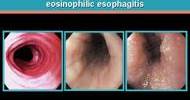Cutaneous T-cell lymphoma (CTCL) is an incurable, rare skin-homing T-cell malignancy that is severely disfiguring and fatal in later stages. Mycosis fungoides, the most prevalent form of CTCL, is characterized by a cutaneous patch, plaque, and/or tumor lesions.
Sezary syndrome is a leukemic form of CTCL in which there are circulating malignant T cells in the blood. In a subset of mycosis fungoides and Sezary patients, large cell transformation develops, signaling an impending transition to an aggressive large cell lymphoma.
Due to the rarity of CTCL, obtaining sufficient tissue specimens to explore the tumor microenvironment during big cell transformation has proven to be a substantial impediment to possible therapeutic improvements.
Moffitt Cancer Center researchers published a comprehensive multiomics study from a rare cohort of 56 patients with transformed CTCL in Cancer Discovery, a journal of the American Association for Cancer Research, and identified several genomic alterations and oncogenic programs that could be potential novel therapeutic targets.
“While cancer death rates have significantly declined for many common cancers in the past decade, there is a sobering underrepresentation of this success in rare cancers, such as CTCL, particularly in the vulnerable racial minority groups,” said study senior author Pei-Ling Chen, M.D., Ph.D., associate member of the Pathology and Cutaneous Oncology Departments and member of the Moffitt Cutaneous Lymphoma Multidisciplinary Clinic, one of the largest CTCL referral centers in the U.S.
In collaboration with MD Anderson Cancer Center scientists, Moffitt researchers performed multiomics profiling on 70 biopsies and 16 fresh tissue specimens from patients with transformed CTCL and investigated the tumor ecosystem using integrative approaches that included whole exome sequencing, single-cell RNAseq, immune profiling via single-cell V(D)J sequencing, and multiplex immunofluorescence studies.
While cancer death rates have significantly declined for many common cancers in the past decade, there is a sobering underrepresentation of this success in rare cancers, such as CTCL, particularly in the vulnerable racial minority groups.
Pei-Ling Chen
The genomic landscape of transformed CTCL is characterized by a high tumor mutation burden and UV mutation signatures that are predictive for survival, according to the researchers.
Significantly decreased contributions of UV signatures and enrichment of mutation signatures associated with poor DNA mismatch repair were found in transformed CTCL samples from Black/African American patients.
In transformed CTCL, the researchers discovered several recurrently mutated pathways and exome-based driver events, as well as differences in the genomic landscape of transformed T cells in skin versus leukemic T cells in blood, revealing opportunities to exploit differential or synergistic therapeutic vulnerabilities in the two body compartments at advanced stages of disease.
The researchers next analyzed 34,912 cells from 16 fresh tissue biopsies using single-cell RNA and V(D)J sequencing to investigate the modified CTCL tumor ecology at single-cell resolution.
The researchers discovered the key oncogenic programs that malignant T cells use to transform large cells, such as metabolic reprogramming toward oxidative phosphorylation, cellular plasticity, upregulation of MYC, E2F, and macrophage migration inhibitory factor activities, and downregulation of MHC-I, which could indicate immune surveillance escape.
Pharmacologic perturbation investigations employing novel small molecule inhibitors of oxidative phosphorylation, MUC, and multiplex immunofluorescence imaging further verified these findings.
“While further validation in larger cohorts and pre-clinical models are needed, our investigation provides a key resource to the community with the largest collection of transformed CTCL samples studied to date, the first comprehensive compendium of genomic alterations at large cell transformation, a blueprint for dissecting the T-cell lymphoma tumor microenvironment at single-cell resolution and identifies potential prognostic signatures and novel therapeutic targets in transformed CTCL. We anticipate results from this study can be extrapolated to other T-cell lymphomas and will help usher novel immunotherapeutic strategies to combat this currently incurable cancer,” said Chen.
While there is a well-known racial discrepancy in CTCL, with Black and African American patients having poorer clinical results, the molecular mechanisms that underpin this gap are unknown.
The researchers expect that their findings may shed light on a possible genetic cause for this discrepancy.
Future studies with a bigger sample size from the vulnerable population, as well as research into the tumor microenvironment for predictive biomarkers and novel therapeutic targets, should assist to eliminate racial disparities in CTCL.
This study was supported by the Moffitt Foundation, Moffitt Clinical Science Fund, Miles for Moffitt, Total Cancer Care, the Donald A. Adam Melanoma & Skin Cancer Center of Excellence and the National Cancer Institute (P30-CA076292, R01CA240434).
















